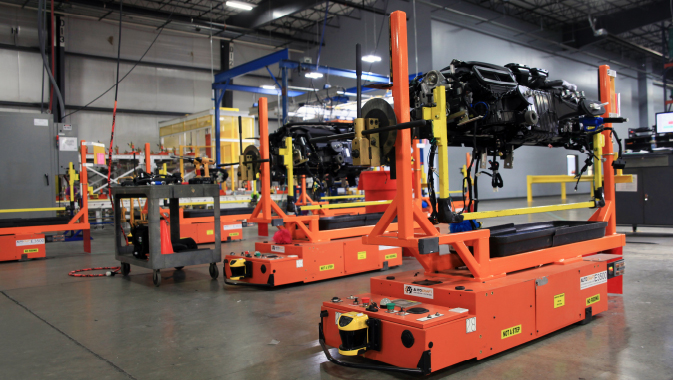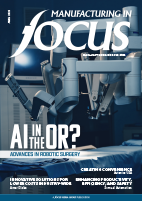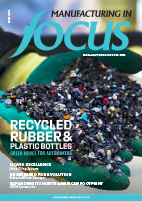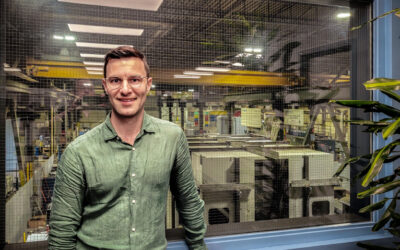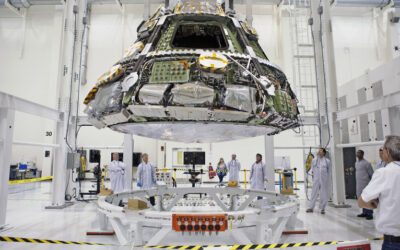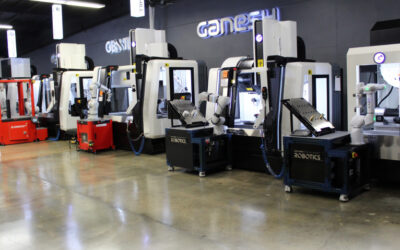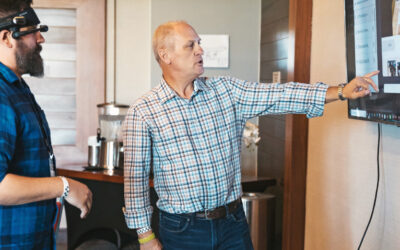Eckhart is a Michigan-based company that designs, builds, and installs Industry 4.0 solutions for the largest manufacturers in the world. From Autocraft autonomous guided vehicles to collaborative robotics and 3D printed tool development, Eckhart helps organizations do more with less.
~
“Closing the gap between cutting edge technology and the realities of a real-world factory environment is what we do,” explains Dan Burseth, a Vice President at Eckhart and M.I.T.-trained engineer. Located in the automation hub of Warren, Michigan, Eckhart’s perspective on emerging industrial technologies is informed by a 60 year track record of helping global manufacturing operations improve production efficiency, safety, and quality.
“Every manufacturer in North America is currently challenged to generate greater output within a fixed factory footprint and amid record shortages of labor,” Burseth continues. “Efficiency gains have to come from somewhere and while automation is the knee-jerk answer, we believe that many emerging industrial technologies aren’t battle ready for real-world factory environments.”
The buzz surrounding industrial technology remains at an all-time high and the labels in the public lexicon continue to grow with the Industrial Internet of Things (IIoT), the digital factory, and Industry 4.0 all seemingly describing the same trend. Eckhart brings a true practitioner’s perspective that feels lacking from the tech press, conventions, and moderated speaker panels.
“Quantity doesn’t mean quality,” says Burseth in response to data that illustrates that nearly 1,100 industrial technology companies were formed and funded in the last four years in the U.S. alone. “As a technology integrator, it’s our job to sort the science experiments from the offerings that will deliver real economic value and introduce minimal downtime risk to the operation.”
Eckhart has organized its business around five solutions that have readily observable track records of installation success and, more importantly, sustainment within high stakes operations. Autocraft Autonomous Guided Vehicles (AGVs), Assembly Automation, Robotics and Flexible Automation, 3D Printing and Additive Manufacturing, and Engineering Services form the building blocks that can be combined to achieve enormous productivity gains.
In an effort to facilitate implementation ease, Eckhart has designed its offering to utilize common factory components like Allen-Bradley and Siemens PLCs. The company believes that black box software and components foreign to the end-user present major introduction and sustainment roadblocks. Additionally, in order to control end-to-end project execution, the company has opted to keep all engineering, production, and installation activities in-house, with seven facilities across three states.
AGVs have been widely used by the automotive industry for two decades to move material throughout an operation without the involvement of human operators. “We recently visited an 800,000 square foot aerospace component manufacturer in Washington whose army of fork truck drivers were generating 550 miles of travel inside the four walls of the facility every week. When we combined the explicit costs of the drivers and their fork trucks with hidden costs like product damage, increased safety risk, emissions, noise, and process variability, the total economic cost associated with their fork truck program astounded the plant’s leadership team,” says Burseth.
Eckhart worked with the customer to build a business case and design a material flow strategy utilizing AGVs to reduce fork truck traffic and human involvement almost 85 percent. An essential early step was the creation of a simulation to model the new system and build confidence with Eckhart’s customer that the projected savings were achievable. Eckhart also helped to navigate compatibility issues with existing systems, navigate a complex plant decision making process, and conform to antiquated technical standards. “The organizational hurdles to try something new are always immense and to think that the communicated benefits of new technology alone will clear a pathway is unrealistic,” says Burseth.
While simple lineside material delivery applications make up a significant portion of Eckhart’s business historically, much of the company’s recent growth has come from the design and execution of entire production lines. “As the engineering resources at our customers become increasingly strained, we continue to see and benefit from their desire to work with a company that can combine many solutions into a turnkey production line. A traditional approach of cobbling together niche and specialist suppliers simply isn’t practical like it once was.”
Eckhart’s engagement with a customer now starts earlier in a project lifecycle by helping develop concepts, gather requirements, and ultimately draft project scopes that are used to secure funding for the plant’s automation initiatives and to generate internal buy-in among stakeholders. Once an initiative is commissioned, Eckhart can draw on its extensive design library to deliver all components in the process. “A work cell on a production line might utilize AGVs to flow material into the workspace, a lift assist to position components, a torque tool to fasten bolts, and a camera mounted on a collaborative robot to complete a quality inspection before exiting the cell,” explains Burseth. “Our ability to offer and integrate all these systems allows us to meet deadlines and ensure functionality in a way that’s just not possible with a patchwork technology strategy,” he says.
The Eckhart team sees two major trends driving the industrial technology landscape in the coming years. First, employment data suggests that the technical labor shortage will only increase, which translates to a major concern as to how organizations will assess, implement, and sustain the new industrial technologies coming to market. Eckhart believes that its customer base simply won’t have the bandwidth to engage in long and experimental validation processes. “Ease and simplicity will beat out sophistication and complexity over and over again,” Burseth summarizes.
The second trend is that consumers and end-users will continue to challenge manufacturers to offer high degrees of personalization and customization, which will further complicate traditional high-volume manufacturers. The degree to which automation is flexible and allows for quick changes, new model introductions, and re-purposing will emerge as a necessity.

